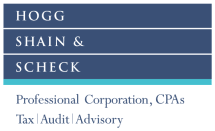Canada Not-for-Profit Corporations Act
The Canada Not-for-Profit Corporations Act (“Canada NFP Act”) became effective October 17, 2011 and was developed to promote accountability, transparency and good corporate governance for the not-for-profit sector. This was considered a necessary modification, as not-for-profit (NFP) corporations incorporated under federal legislation have been abiding by an act which is approximately 95 years old.
The first step in the transition process to the new Canada NFP Act requires NFP corporations to review their current letters patent and by-laws. Therefore, although this new Act places additional requirements on not-for-profit corporations which may not have significant resources at hand, it is viewed as an opportunity to make important choices in amending their governance structure, as desired.
The Difference Between Soliciting and Non-soliciting Corporations
A major change in provision is the classification of a not-for-profit corporation as being either a soliciting corporation or a non-soliciting corporation.
Soliciting corporation:
A soliciting corporation is defined as a corporation that receives in excess of $10,000 in a single financial year from public sources (eg. from public donations, grants, government financial assistance), directly or indirectly. Once the not-for-profit organization has been determined to be a soliciting corporation, based on the date of the annual meeting of members, the classification is held for the next three years.
Additional requirements for soliciting corporations
- Required to have at least three directors, with a minimum of two who are not officers or employees.
- Subject to stricter not-for-profit organization financial reporting requirements (see below).
- Provide financial statements to Corporations Canada at least 21 days before the annual general meeting of members.
- Upon dissolution and liquidation, they must distribute remaining assets to qualified donor(s).
Non-soliciting corporation:
A non-soliciting corporation is defined as a corporation that has not received any public funds, or less than $10,000 in public funds in each of its three previous financial years.
Financial review for Canada Not-for-Profit Corporations
Financial review of soliciting corporations:
If annual financial revenue is less than or equal to $50K, the not-for-profit corporation must perform a review engagement, but members can pass an ordinary resolution to require an audit instead. However, a compilation may be performed in lieu of a review if members unanimously waive the appointment of the public accountant at the annual meeting.
If annual revenue is between $50K and $250K, the not-for-profit corporation can waive the audit requirement by passing a special resolution and perform a review engagement instead.
If annual financial revenue is greater than $250K, the performance of an audit engagement is mandatory.
Financial review of non-soliciting corporations:
If less than or equal to $1M in annual revenue, the not-for-profit corporation must perform a review engagement, but members can pass an ordinary resolution to require an audit instead. However, a compilation may be performed in lieu of a review if members unanimously waive the appointment of the public accountant at the annual meeting.
If annual revenue is less than $1M, the performance of an audit engagement is mandatory.
In all circumstances, it is required that the members appoint a public accountant at each annual meeting, or waive appointment by annual unanimous resolution in cases where a compilation engagement is desired.
Changes to Canadian Not-For Profit Governance
The directors of a not-for-profit corporation which operates under the new Canada NFP Act are subject to the same duty and standard of care as directors of business corporations incorporated under the Canada Business Corporations Act (“CBCA”). Incorporation is simplified in that there is now an “as of right” system in place to replace the letters patent process such that the certification process for incorporation will ensue once the required documents (articles of incorporation and notice of registered office and initial directors) are filed in conformity with the Canada NFP Act and the required fee is paid.
Added provisions for amending a corporation’s articles and, in certain cases, its by-laws are available. Other added provisions include:
- the ability to amalgamate with another corporation
- continuing into or out of the statute
- reorganizing through a court order or an arrangement.
The NFP corporation will have fewer limitations in carrying out activities to further the “objects” in their letters patent as it will now have the capacity and rights of a natural person and the former concept of the NFP corporation’s activities being considered ultra vires is now discarded. The members of a NFP corporation will have enhanced rights, such as the right to access corporate records, membership lists, as well as the right to requisition a meeting and submit a notice of proposal to discuss a specific matter at the members’ meeting.
Ex officio directors (directors who become directors by virtue of their position in another organization) are no longer permitted and the NFP corporation will need to amend its governance structure under the new Canada Not-for-Profit Act. Membership classes and voting rights are to be outlined in the articles of incorporation, which will be made publicly available.
Deadlines and the Transition Process for Canada Not-for-Profit Act
The transition to the Canada NFP Act is required to take place over three years, where the NFP corporation will need to write and file articles to the Director that replace the letters patent. If the NFP corporation does not complete the transition by October 17, 2014, the Director will dissolve the corporation.
There is no cost of performing the transition if it is done within three years. However, if it exceeds the three year deadline, the NFP corporation is dissolved and a fee will be required in order to perform a revival under the Canada NFP Act.
To assist NFP corporations with the continuance procedures required for transition, the Director has released:
- a Transition Guide,
- model Certificate of Continuance, and
- model by-laws.
Refer to the following website for this guidance: http://www.ic.gc.ca/eic/site/cd-dgc.nsf/eng/h_cs04954.html
To ensure you are not forgetting anything, see transition checklist: http://www.cra-arc.gc.ca/chrts-gvng/chrts/prtng/nfpc/cntnnc-chcklst-eng.html
Use the following link for additional publications and forms from Corporations Canada: http://www.ic.gc.ca/eic/site/cd-dgc.nsf/eng/cs05003.html






